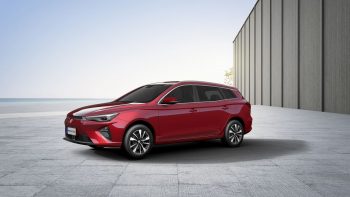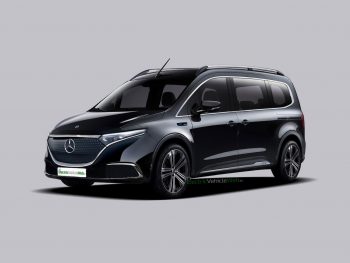The Swiss mobility company, Micro Mobility Systems, based in Küsnacht, unveiled the Microlino 2.0, a two-seater electric vehicle prototype in a private event back in March 2020. After going through the prototype phase, the BMW Isetta-like urban vehicle was bound to go into production in September 2021, but the Covid restriction postponed the plans.
In a press release by Micro Mobility on January 6, 2022, a brand new plan to execute the production process has been shared. The release mentions that the ongoing automotive component supply shortage continues to be a challenge for all automakers worldwide. Interestingly, some commodity parts like simple connectors for wiring harness command lead times of up to 50 weeks! Taking these factors into consideration, Micro Mobility plans to commence production of the Microlino 2.0 by mid-March 2022. The customer deliveries will begin from April/May 2022 in Switzerland, with Germany following soon thereafter.
Prototype to Production
In April 2021, the company released a video showing the Microlino 2.0 and Microlino 1.0 competing in a drag race. As comical as the two microcars may look competing in a drag race, on a serious note, the video indicates that the updated version offers significantly better acceleration. Although an unofficial comparison, the new model seems to have finished the drag race about one and a half seconds earlier, which is an appreciable difference.
Micro Mobility test drove the first working prototype of the Microlino 2.0 in February 2021 to understand the improvements compared to the Microlino 1.0. The company released a video of this red & white prototype and new details, which you can watch on facebook.com.
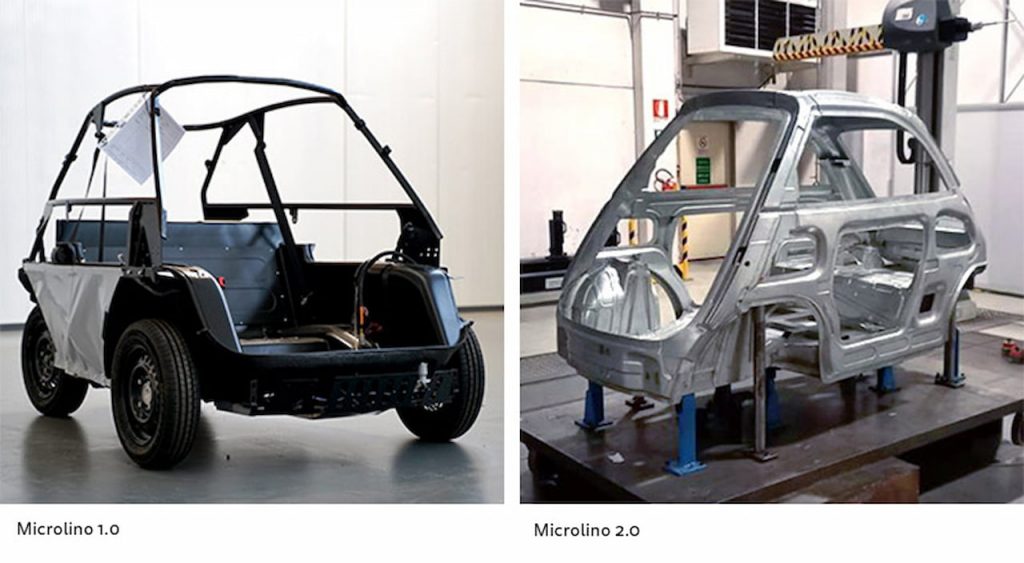
The Microlino 2.0 has better handling characteristics compared to the old model. Its new structure, which we have discussed further in the story, brings significant safety improvements. Passenger safety would be the first question in the minds of many when this pint-size car goes on sale in the European market, addressed by the new frame.
Microlino 2.0 vs 1.0 – Exterior & Interior
The Microlino 2.0 will come in three variants, Urban, Dolce and Competizione, with an exclusive ‘Pioneer’ series planned for 500 customers at the launch. The lines have been smoothened on the front, there’s a new LED light bar with integrated turn indicators, while the headlamps are placed on either side of the door. The steering column is now fixed to the car and not connected to the door.
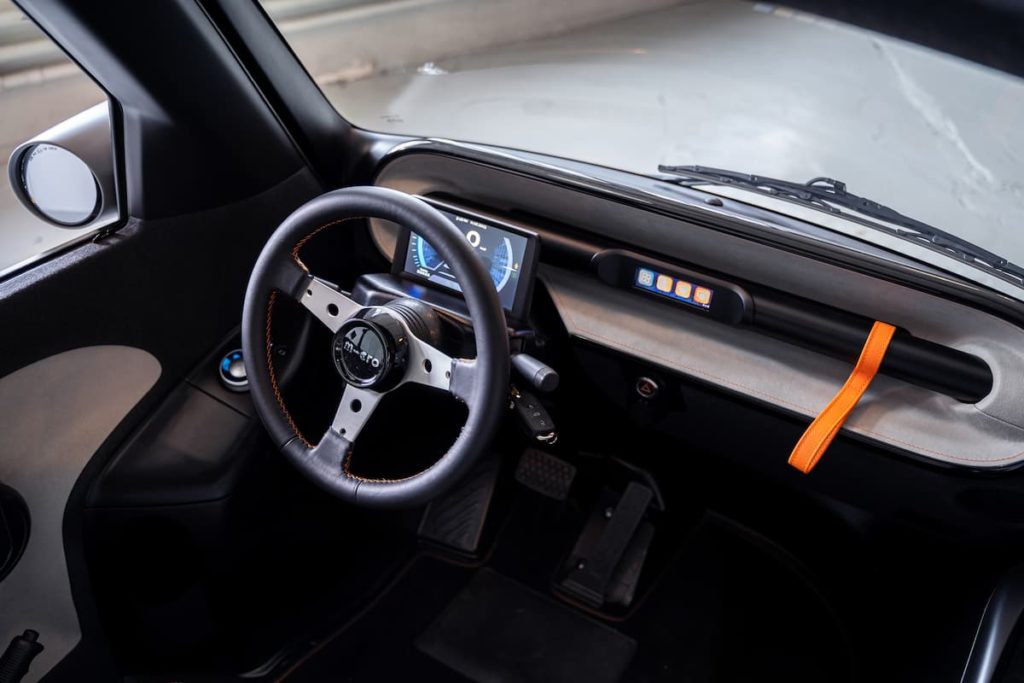
The seats have been redesigned for better comfort and ergonomics, and ambient lighting is included. The interiors have been made more spacious as many components have been removed, leaving only the rigid frame and panels. A digital display in place of the instrument cluster gives the interior a clean layout.
The Microlino 2.0’s all-new chassis that is not made with a tubular frame but built with pressed steel, improves the stiffness and safety. Body parts of the car are now built with aluminium and steel, with the plastic usage limited to the front and rear bumpers. Also, the Microlino 2.0 has independent suspension at the front and rear. For this, the rear track has been increased by 50 per cent and the e-motor, which earlier resided in the rear axle, sits in the chassis, thus reducing the unsprung masses and also improves the driving comfort. Microlino also states that the 2.0 is 10% more energy efficient.
Specifications
Micro Mobility confirmed via a press release on September 15, 2021, that the Microlino 2.0 will come with a 6 kWh, 10.5 kWh and 14 kWh battery packs good for 95 km, 175 km and 230 km respectively, as per the company. Micro Mobility says that the largest battery pack will be available in July 2022. The top speed will be limited to 90 km/h and the 0-50 km/h acceleration time stands at 5 seconds.
The peak power output is rated at 19 kW (25 hp) and peak torque will be 118 Nm. The Li-ion battery with NMC (Nickel-Manganese-Cobalt)/NCA (Nickel-Cobalt-Aluminium) technology could be charged from 0-80% in 4 h (6 kWh), 3 h (10.5 kWh) and 4 h (14 kWh) via the regular AC charging. Looking at these figures, it can be concluded that the bigger batteries would be charged via a fast charger.
Price
The base price of the 2.0 should remain unchanged at 12,000 Euros. The production, as stated earlier, is planned to commence in mid-March 2022 with the deliveries planned in April/May 2022.
Interview with Merlin Ouboter
In an interview with ElectricVehicleWeb in May 2021, the Chief Marketing Officer at Microlino AG, Merlin Ouboter, mentioned that the Turin plant was supposed to have the production capacity of 10,000 units annually which was already an issue because the company had received some 22,000 reservations back then. He also talked about the possibility of a stripped-down, locally-produced version of the Microlino 2.0 for the markets with less purchasing power.
On the theme of a possible launch in the U.S., Ouboter confirmed that there had been great interest from the American market but the vehicle needs to go through a lot of changes to meet the different market regulations. He stated that Germany, France and Italy were the priorities, after the Swiss launch.
Prototype driving impressions
Last year, we spoke to Microlino enthusiast Christian Reding who is following the developments of the vehicle closely. He runs the Instagram channel microlino_on_tour where he pictures and footage of the test prototypes appear regularly. Here’s his take on the quadricycle –
The prototype of the Microlino 2.0 feels very solid. The driving behavior is much better than that of the first version. Also, thanks to the larger track width of the rear wheels, more safety is guaranteed. The acceleration is also better than the first version.
The Microlino 2.0 is unique with its design. He stands out, finds a parking space everywhere. Space in the cities has never been scarcer than it is today. And the electric drive means that you are locally CO2-neutral mobile. All in all, it was worth the wait!
Christian Reding of microlino_on_tour
Featured Image Source: Facebook/Microlino
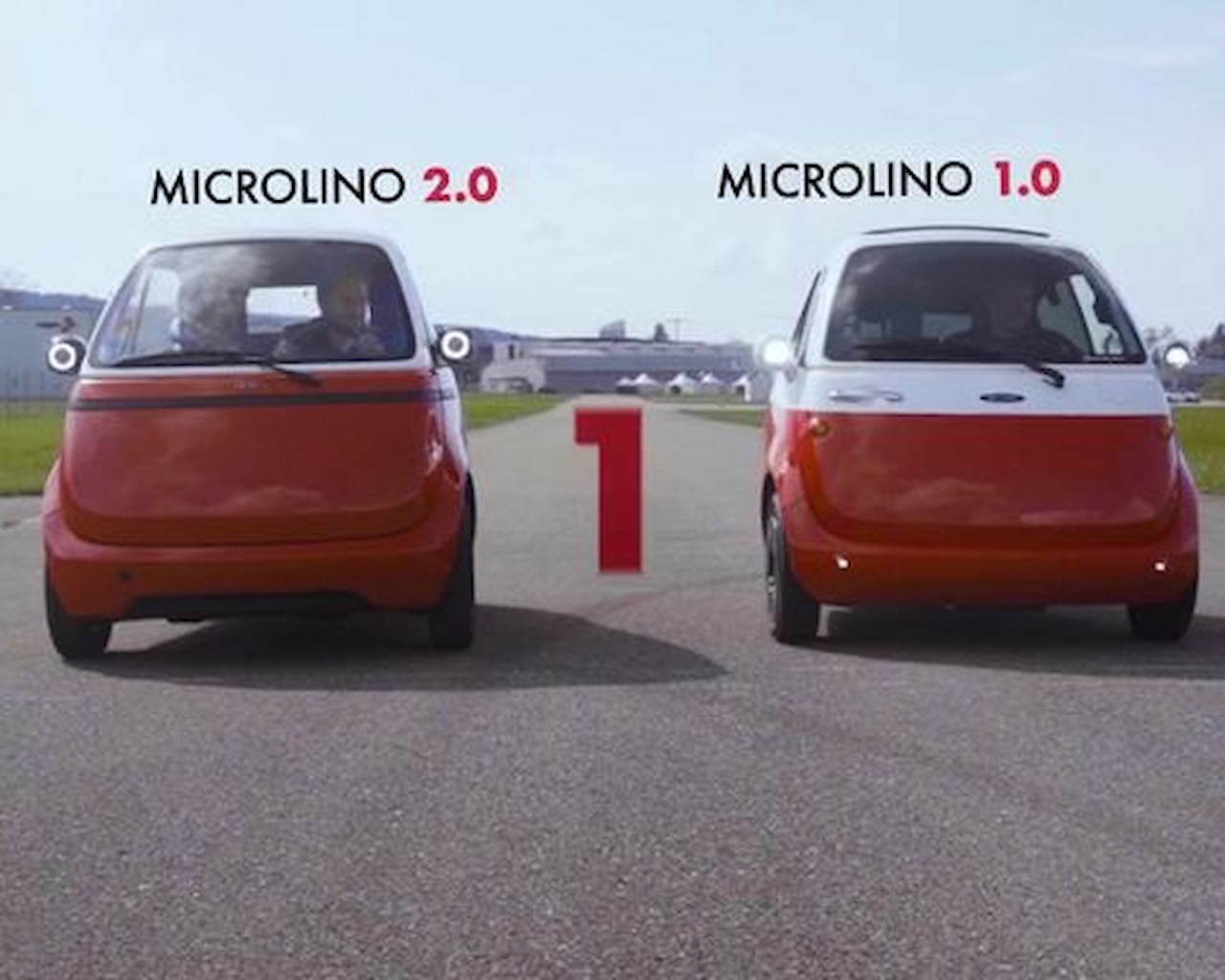
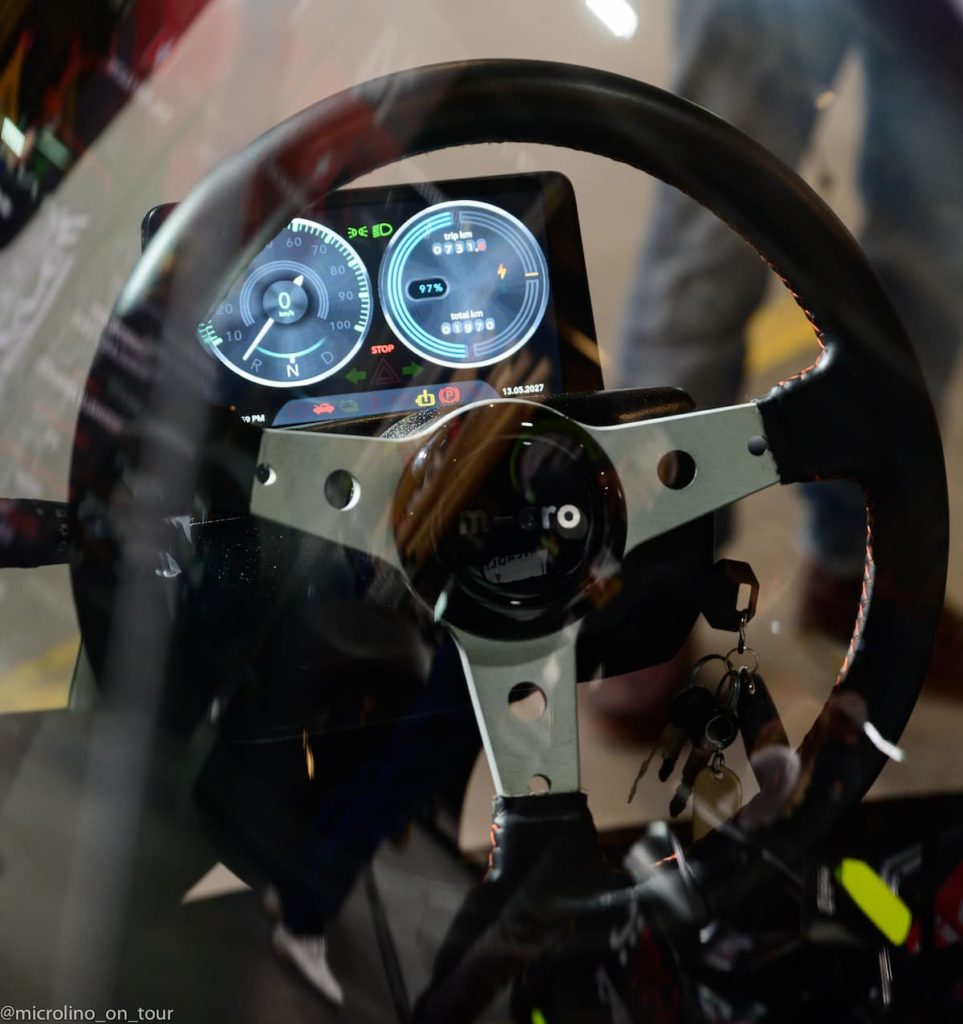
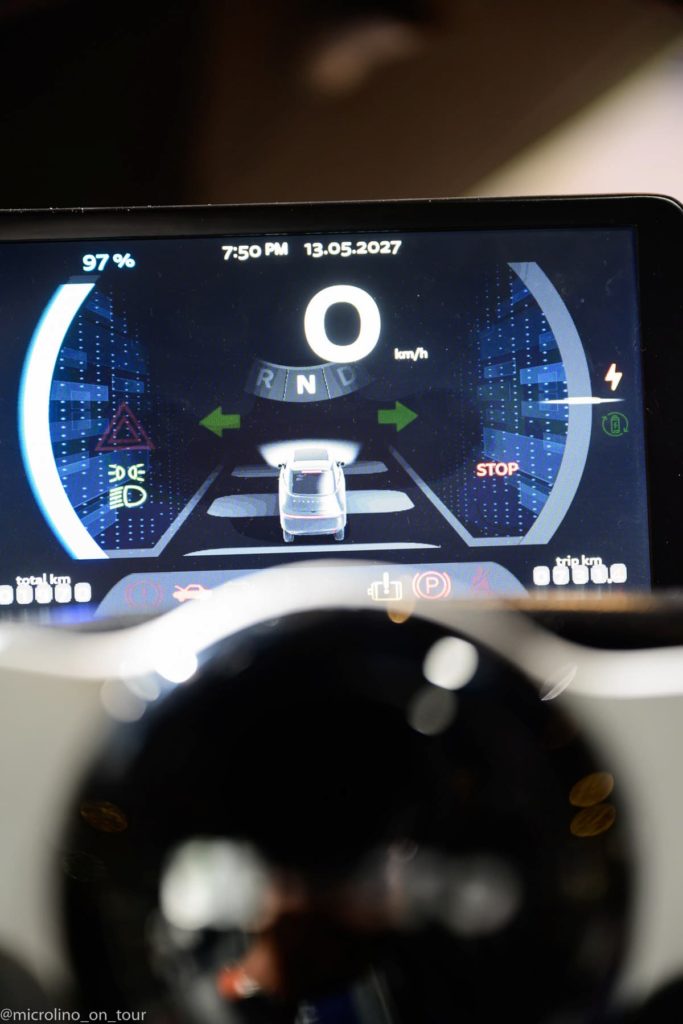
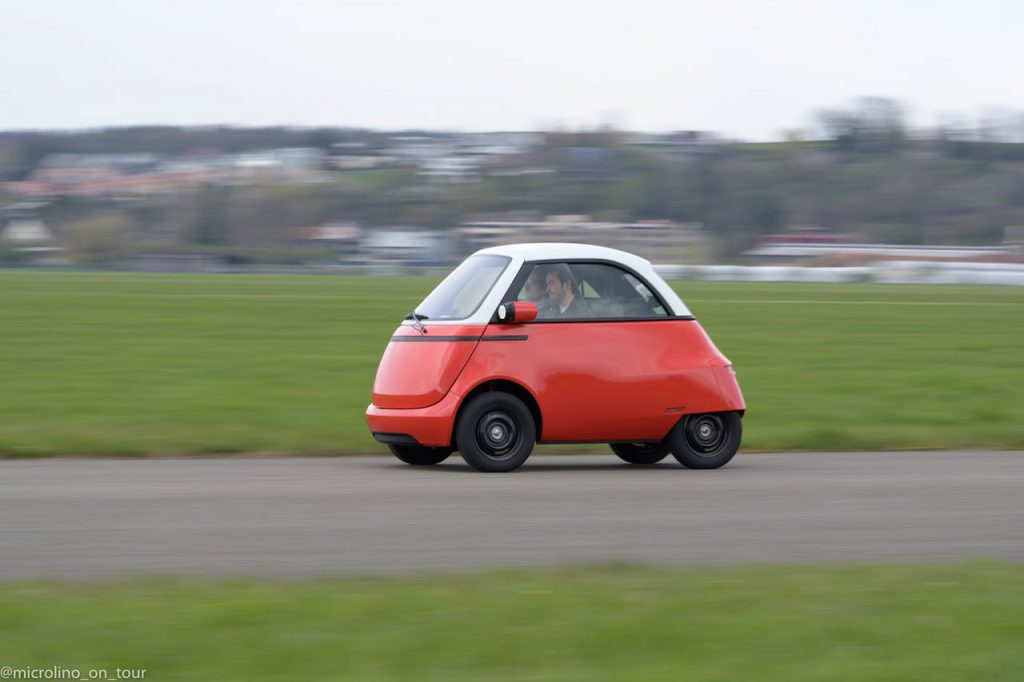
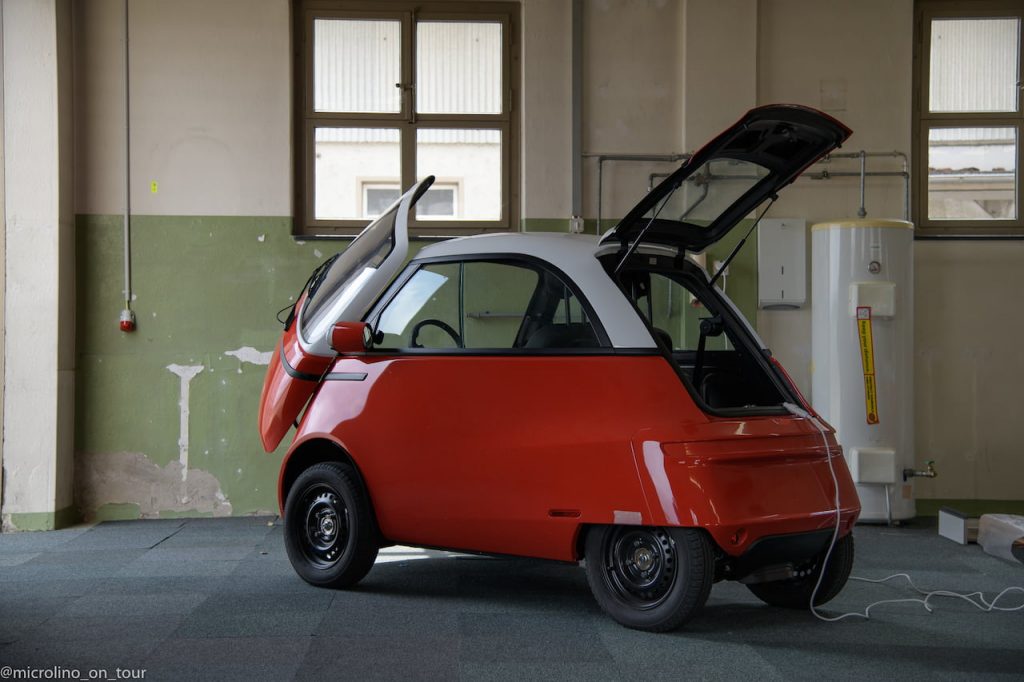
![Compact Hyundai ‘Ioniq 3’ to be produced in Singapore in 2025 [Update]](https://electricvehicleweb.com/wp-content/uploads/2022/01/2025-Hyundai-Ioniq-3-rendering-front-350x220.jpg)
